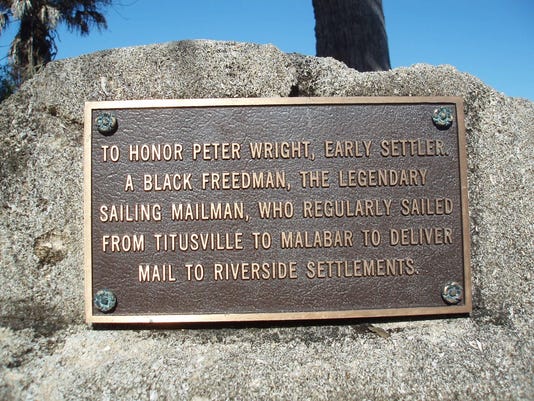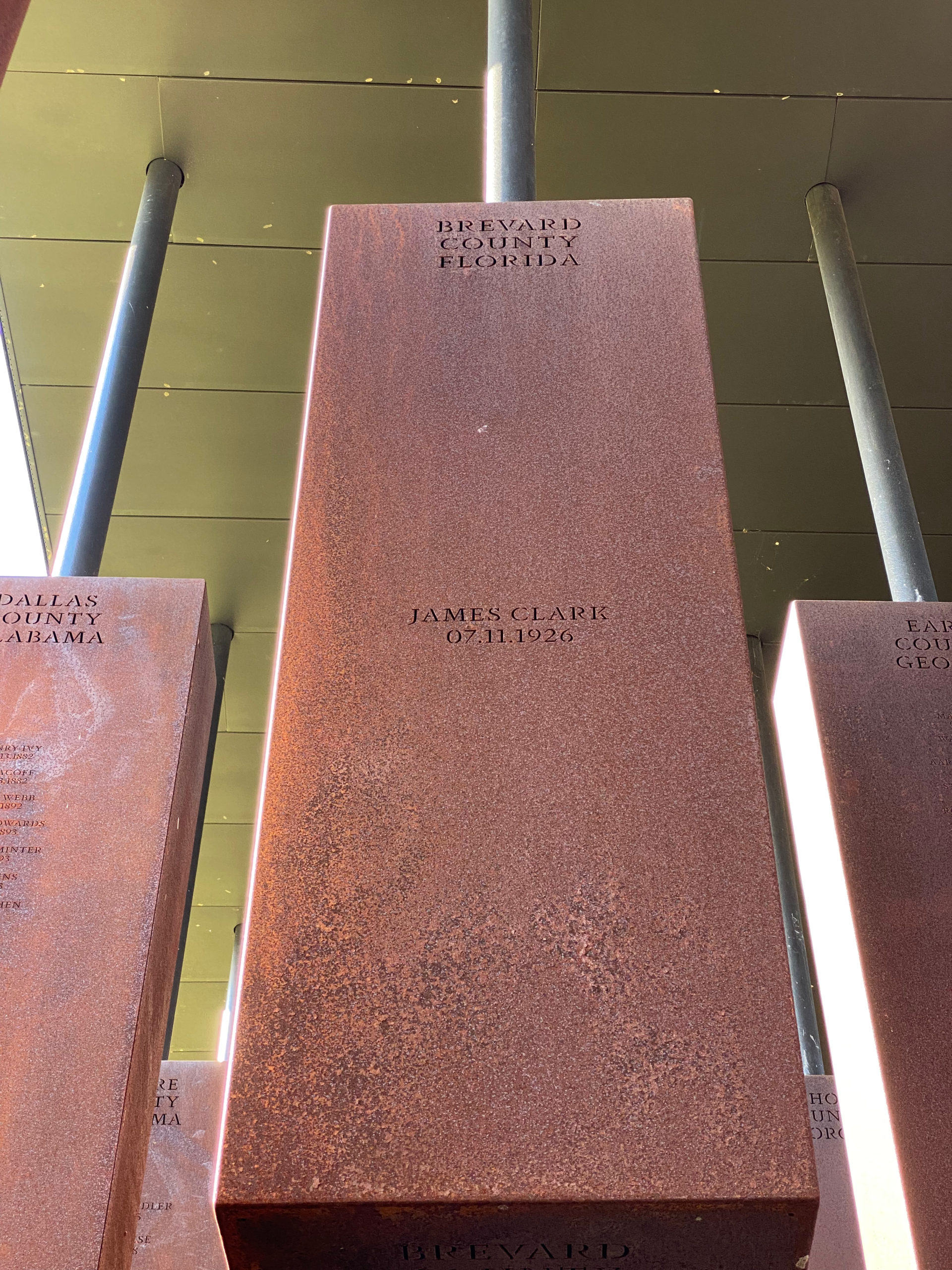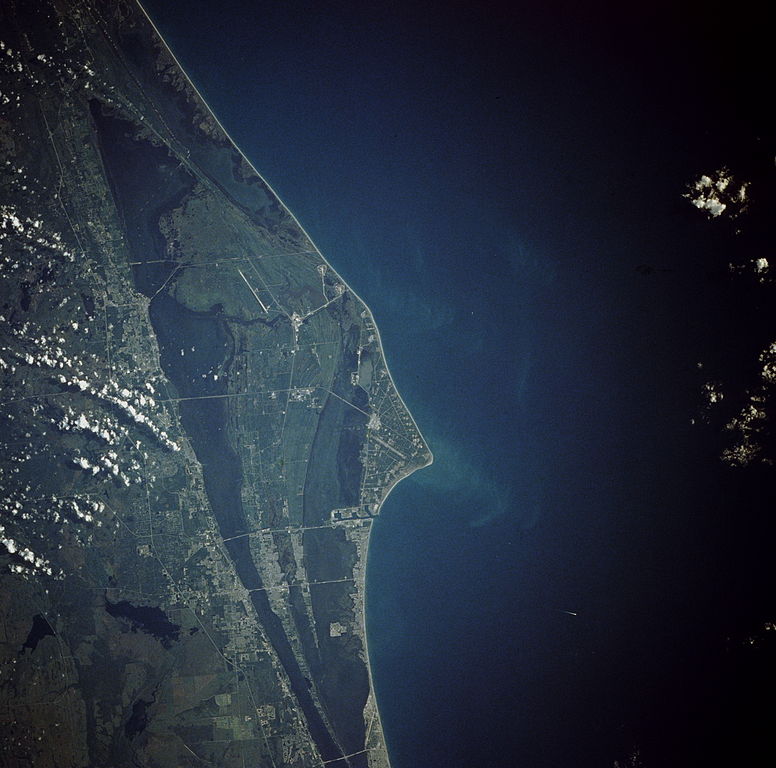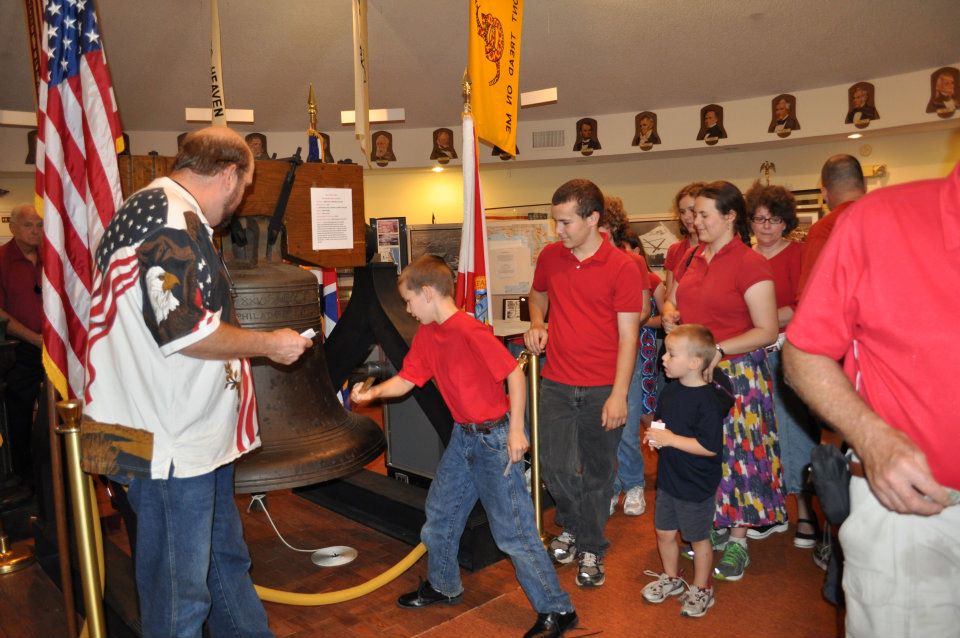The Liberty Bell Memorial Museum
If we share our space with all the souls who’ve lived here before us, then Melbourne, Florida, is teeming with ghosts — and they’re not all at peace.
Dig just under the surface, and you’ll find evidence of the first humans to make their homes here in the late Pleistocene epoch, some 11,000 years ago. You’ll find bones of the beasts of their world — short-faced bears, saber-toothed cats, mastodons and giant beavers.
By sheer numbers, the spirits of these Aboriginal Americans dominate this space, along with 300 generations of descendants — evolving and adapting and living and fighting and dying here.
The Ais Indians, as they will come to be known, are shorter in stature than other indigenous groups and are feared as skilled warriors who take no prisoners.
The Ais are nonagricultural, their diet consisting primarily of seafood. From what will later be called the Indian River, a single hunter can spear enough fish in an hour to feed ten people.
Small groups in canoes track whales in the shallow waters off the cape. One hunter will jump from the canoe onto the whale’s back and hammer a wooden plug into the creature’s blowhole.
As the whale slowly suffocates and sinks to the bottom of the sea, the hunters dive deep beneath the surface to harvest their kill. Over time, the Ais have developed bony growths in their ears that equalize underwater pressure.
Outsiders arrive from Spain in 1513, claiming and naming this place of flowers as their own. They come in search of a spring that will grant eternal youth to those who bathe in its waters. The 200 Spaniards plan to establish a farming colony. Instead, their leader finds an Ais arrow through his thigh. He retreats to Cuba and dies at 62.
After the Spanish come the French. Then the British. Then the Spanish again — forcing enslaved Ais divers to salvage shipwrecks in the cape. Two centuries of war and disease and hope and peace follow. By the time 13 colonies to the north declare independence from Britain, the Ais have all but disappeared.
In 1876, three formerly enslaved couples are among the first pioneers to establish a community in what will soon become Melbourne, now called Crane Creek. They are Mary Silas and Wright Brothers, Carrie and Balaam Allen, and Leah and Captain Peter Wright. Captain Wright becomes the area’s first postal carrier and largest landowner.

Crane Creek is renamed a few years later in tribute to its first postmaster, Englishman Cornthwaite John Hector, known for telling tales of his exploits in Melbourne, Australia.
At the end of Legendary Lane stands the ghost of a tree. Today, the street is lined with 17 well-manicured ranch-style homes and ends quietly at a cul-de-sac. Unless you live here or you’re lost, you’re not likely to find yourself on Legendary Lane.
On a bright July morning in 1926, the last Black man to be hanged from this tree swings gently in the ocean breeze.
Though the town has had much practice, the noose does not kill James Clark. A member of the lynch mob raises his shotgun and puts the matter to rest. Clark, a 38-year-old husband and father of three from neighboring Eau Gallie, was working as a chauffeur for a traveling salesman when a 10-year-old girl’s accusation prompted his arrest. In the waning daylight, a mob of ten masked White men reportedly overpowered the sheriff of nearby Titusville as he was relocating Clark to a supposedly safer location.
Per capita, more people are lynched in Florida than in any other state. This is the sturdy oak’s third hanging in two months. Lynchings are so frequent in Brevard County the road leading to the lynching tree is named Lynching Tree Road. While his body hangs the following morning, Clark is photographed for posterity — his shirt and pants still neatly pressed. The image becomes a postcard sold in local stores for decades.

In 1980, Black residents petition the city for a name change. The city concedes, renaming it Legendary Lane.
In 1943, at 2100 Vernon Place, a young woman and her husband — an aviator training at the newly-commissioned Melbourne Naval Air Station — bring home their first child. James Douglas Morrison grows up to join a band, claims his parents are dead, crowns himself the Lizard King, gets arrested for indecent exposure and dies in Paris at 27.
Throughout the Second World War, just as they were 400 years ago, residents are on high alert for foreign ships approaching the coast — this time, it’s German U-boats. Men, women and children volunteer to sit on rooftops keeping watch for enemy aircraft.
After the war, the thin strip of sandy scrubland between the cape and the ocean serves as a missile range.
In 1960, when the president pledges to put a man on the moon and return him safely to Earth, the missile range proves the ideal location for a launchpad.
Putting a man on the moon quickly rivals citrus production as the area’s main industry. In 1961, locals line the beaches to watch the first Americans launch into outer space. In 1969, along with the rest of the world, they watch three men go to the moon.
The region’s area code is changed to 321 — a tribute to the countdown to blastoff.

In 1986, on the 25th orbital Space Shuttle mission, six astronauts and one civilian blast off. Singer John Denver and muppet Big Bird are considered, but ultimately NASA chooses a contest-winning schoolteacher. Seventy-three seconds later, locals and schools across the country watch the craft silently disintegrate and tumble back to Earth. The crew cabin lands 18 miles northeast of the launchpad, joining countless other shipwrecks at the bottom of the sea.
By 2008, the golden age of rocket launches has grown smaller in the rearview mirror. The Great Recession hits Florida hard. By year’s end, 400,000 jobs will be lost, the state deficit exceeds 2 billion dollars, and the population declines for the first time since the Second World War.

Melbourne’s history museum, a repurposed water tank with a replica Liberty Bell as its centerpiece, is feeling the pinch. Asked whether the museum might have to close its doors, board member Mark Pence tells the local newspaper, “It’s not an imminent thing, but if you don’t make money, you can’t keep the doors open.”
The museum holds a fundraiser titled “Bring the kids, meet the heroes.” Visitors can ring the Liberty Bell and hold a Revolutionary War musket. Photographs of Brevard County during World War II line the gently curving walls. Cutouts of each U.S. President adorn the air conditioning ducts.
In 2005, the Liberty Bell Memorial Museum opens its next-door annex, Freedom Hall. Honor America, Incorporated, the museum’s nonprofit operator, receives so many donated items from local veterans the water tank can’t hold it all. Liberty Hall displays medals, uniforms, weapons and models honoring each branch of the military and each major U.S. war.
On a chilly January day in 1985, a groundbreaking ceremony is held on this site for the planned Liberty Bell Tower and Museum. The tower designed by Vislay and Cantelou, Architects, will be built on the foundation of the old water tank. The city of Melbourne donates the site. The tower is never built. Instead, the museum sets up shop inside the water tank.
On the 4th of May, 1976, the local Chamber of Commerce, Board of Realtors and Honor America, Inc., sponsor a 3-hour radio and TV telethon to raise funds for the belltower’s construction. The hope is to raise $5,000 toward the tower’s $50,000 budget.
Throughout the Bicentennial year, local schoolchildren collect pennies, raising $12,000 to purchase a replica Liberty Bell from the Whitechapel Bell Foundry in London, where the original was cast. Before the bell is put on permanent display in the water tank, it’s stored on a trailer in a nearby garage — brought out for parades and special occasions. Lotte Lopez, past Executive Director of the museum, recounts the perils of transporting the one-ton bell, “One time, it fell off the trailer and put a little dent into it.”
While it’s not one of the Space Coast’s most popular attractions, the Liberty Bell Memorial Museum has some fascinating stories to tell.
Through good times and bad times, the Melbourne Liberty Bell replica has remained uncracked, as has the spirit of Honor America volunteers, who will happily unlock the doors to the old water tank and show you around — as long as you call ahead for an appointment. As always, the museum is free to visit.
Donations are appreciated.

Reference: Orlando Sentinel, Honor America, Inc.,

